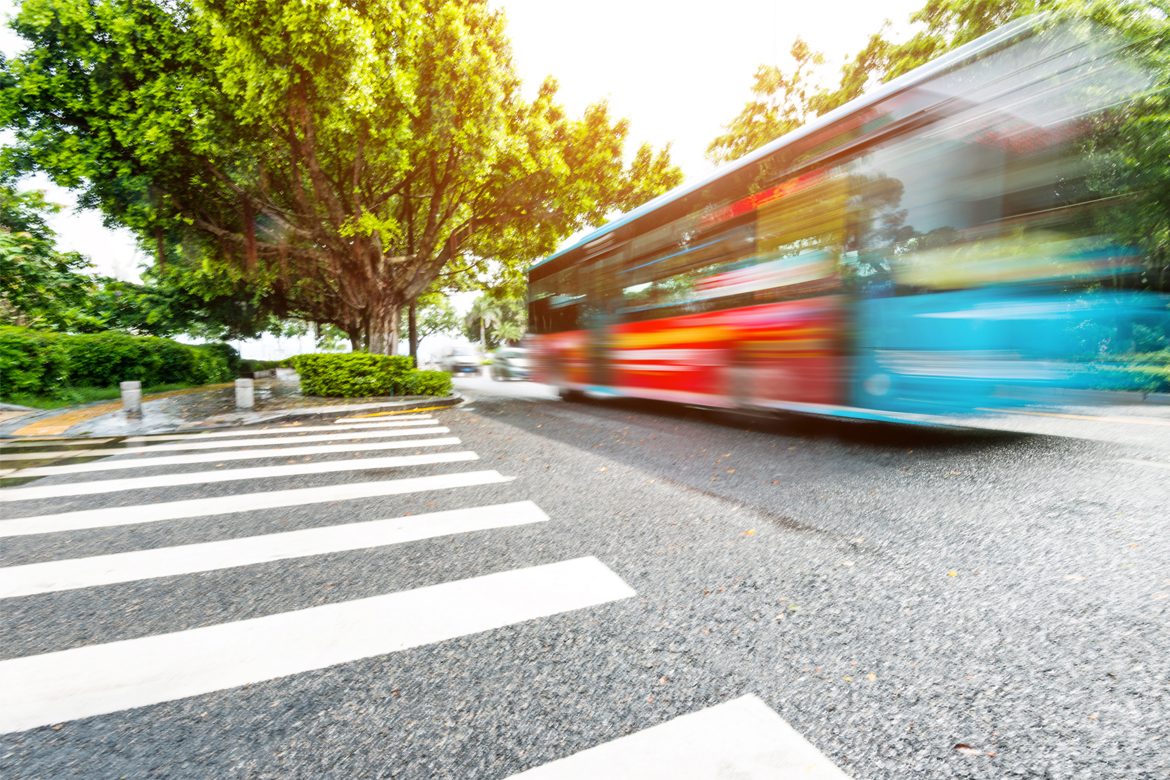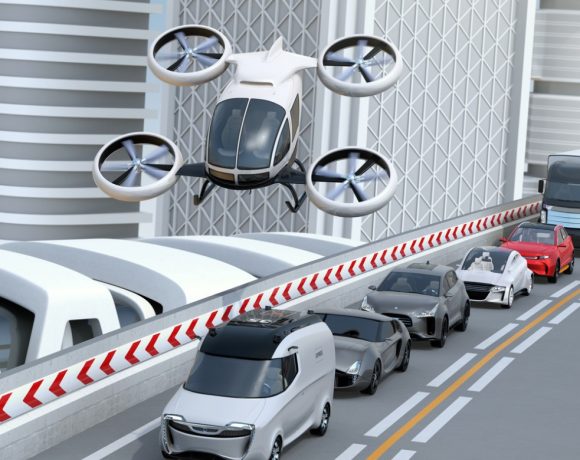- Drop in commute, combined with fixed costs such as asset and staff management, has plunged public transport providers into fiscal distress. Informal transport systems in smaller Indian cities face the highest risk during the current crises.
- Fiscal and social measures such as extended moratorium on loans, health insurance and access to subsidised food grains are crucial for the survival and longer-term sustenance of transport providers and common man alike.
- Regulatory actions by the government and research, analytical, technical and capacity building support from industry players, academic institutions, think tanks and non-profits are key opportunities that can be advanced during this time.
Indian cities are well suited for public transport oriented mobility. The high density population development along with relatively low car ownership of 80 cars per 1,000 people in urban areas help achieve high ridership on public transport systems. Further, most of our cities have mixed land-use development with multiple business districts spread across the city which helps transit operators attract ridership, improve their service effectiveness and cost recovery. However, personal ownership of vehicles has seen an exponential growth over the past two decades with two-wheeler ownership reaching about 440 vehicles per 1000 people in cities. Despite increasing personal vehicles, public transport (in its various forms) was the mainstay of mobility in India until February, 2020.
Since the Coronavirus started spreading and lockdowns came into effect in March-2020, public transport access to general public was curtailed and restricted to serve health workers and other essential service providers. Even as lockdown conditions were eased and public transport service levels improved, the passenger demand for these services remain much lower than earlier due to a multitude of reasons.
Firstly and most importantly, commute to work which makes up about 50% of trips in Indian cities is yet to reach pre-Covid levels as the overall economic activity which generates the demand to offices, commercial shopping centres and wholesale markets has reduced. Where possible, many offices are advising employees to work from home. Secondly, educational institutions which generate about 30% of trips are yet to resume physical classrooms. The perceived fear of contacting the virus on public transport only comes later, even though that’s the most talked about reason among general public and transport professionals. There’s now adequate knowledge base and evidence that operators’ sanitising public transport through available Standard Operating Procures (SOPs) and users adopting face masks and hand sanitisers will help address this risk in reasonable measure.
The impact of lower demand for public transport due to Covid-19 and revenue, combined with continued fixed costs such as staff and asset management, has led to a significant financial distress among public transport operators. Addressing the challenges faced by transit providers and ensuring their sustainability is of paramount importance to achieve pre-Covid levels of economic activity. The challenges faced and the road to recovery varies between different modes of public transport.
Sustaining public transport through the Covid-crisis
Regional and urban rail systems are backed by the Government of India (GoI), providing them with the best chance of sustainability. Bus systems are the only form of formal public transport in more than 60 Indian cities and also constitute the majority of the intercity public transport market. They have traditionally relied only on ticketing revenue and hence would need fiscal support to survive the current crisis. Measures to cover essential expenses such as salaries for staff serving both in-house and outsourced operations along with extended moratorium on loans are critical needs for both public and private bus systems to survive. High rate of taxation on public transport is another long-standing issue which needs to be addressed on priority to support the sector.
The form of public transport that faces the highest impact is the informal transport. Commonly referred to as paratransit or Intermediate Public Transport (IPT), it serves as many users as buses in many medium sized cities with population in the range of 1-5 million people. In most of the smaller cities and rural areas, it is the only form of public transport available for users to access their activities, goods and services. India has about 7 million paratransit operators who sustain without any financial support from the Government by providing low-occupancy (4-6 seater vehicles), low cost and demand responsive services that are priced cheaper than public transport services. Since they operate on low margins and at the same time face high financing costs of loans taken from the informal market, their survival through the current crisis is at the highest risk. Fiscal measures such as extended moratorium on loans and social measures such as health insurance and access to Public Distribution Systems (PDS) providing subsidised food grains are crucial measures for the survival and longer-term sustenance of about 30 million people dependant on the paratransit sector, including operators and their families. Such support to the sector can also be leveraged to bring in the much needed regulatory reforms to organise the sector better that can work towards a coordinated paratransit operations regime.
Low-investment and high impact measures to improve public transport
National, State and City level Governments are currently facing significant financial pressures due to the healthcare and social welfare expenditure in response to Covid-19. This is likely to limit investments, at least in the short to medium term, on items such as public transport service expansion and transition to high cost technologies such as electric mobility. During this time, the Government can still adopt low-investment strategies to improve attractiveness of public transport such as policy and regulatory actions addressing the systemic challenges faced by the sector. Non-Governmental actors also have a key role to play. The following is an overview of some actions that can be taken up to achieve a sustainable ‘New normal’ for public transport as we recover from Covid-19:
Government initiatives needed to improve policies and regulations governing public transport: Indian States and Cities need to adopt regulatory measures such as Public Transport Service Obligations (PTSOs) on the lines of those adopted in the European Union (EU). PTSOs and supporting Public Transport Service Contracts (PTSCs) that ensure sustained financial support to cover for the gap between cost of service provision and revenues from fares. Such formal mechanisms can help transit agencies sustain periods of low revenue during Covid recovery. In the long-run, it can also support them with the ability to provide affordable travel choices to the public even on lesser revenue services such as maintaining minimum level of service in rural services and off-peak hours in urban areas. The PTSOs need to be supported by other key measures to improve transit attractiveness such as effectively implemented bus priority lanes along with parking supply and pricing regulations which can be used to supplement the funding needs of buses. Paratransit reforms to reduce on-street competition through interventions such as mapping and integrated planning to increase service coverage is the other key measure needed to improve public transport in smaller cities, suburban areas of the larger cities and in rural areas.
Industry innovation needed to improve efficiency in public transport service delivery: Indian transit agencies are yet to realise the significant benefits offered through greater adoption of technology. Technology adoption was traditionally viewed by bus agencies as an additional investment rather than as a tool that drives their business. Further, limitations in procurement methods have resulted in Indian cities prioritising lower cost solutions over world class systems that enhance their business. If the industry can develop innovative business models to deliver better hardware and software solutions, there’s significant scope to improve on applications such as Automatic Vehicle Location Systems (AVLS), passenger information systems, digital ticketing systems and data analytics for performance management and service planning. While the passenger information systems and digital ticketing space has seen some innovation in recent years, the solutions are yet to achieve scale.
Analytics and capacity building initiatives to support improvement of public transport: Analytical solutions to improve public transport have traditionally received limited attention in India. Academic institutions, think tanks and non-profit agencies can play a significant role in addressing these gaps by creating tools to develop such solutions, build technical capabilities of transit authorities to implement these solutions and institutionalise them in the long run. A key gap area that needs focus is understanding the transit users better. Choices of users as a function of improving public transport characteristics such as service frequency, service quality, supporting infrastructure, information systems and their willingness to pay for these improvements are yet to be established. Similarly, developing analytical tools for improved route network design, timetabling and scheduling of services to reflect the changing travel demand characteristics and road network characteristics can help cities move away from the current trial and error based service planning approach. Such solutions can be customised for the case of developing countries like India, reflecting the local user and operator characteristics.
In summary, public transport will continue to be the mainstay of travel in India despite the impacts of Covid-19 because majority of its users are currently dependant on the system and the defining characteristics of Indian cities, such as, high population densities and multiple business districts continue to provide the necessary precondition to achieve high ridership on public transport. Fiscal and regulatory measures that can help transit agencies overcome the Coronavirus imposed crisis are a necessary precondition for their long-term sustainability. Simultaneously, efficiency gains within available capacity through low investment but high impact innovations and analytical solutions are needed to improve service levels in the short to medium term horizon since the environment isn’t likely to be conducive for capital intensive investments. However, in the long-run public transport in India requires significant investments to improve its overall service levels, to support its transition to zero emission fleets and to deliver quality services that attract users to choose public transport over their personal vehicles.






Christopher SJ
19 July
Well drafted & true to points Ravi. Public transport in India requires significant sizeable investments to improve its overall service levels and to deliver quality services that would certainly motivate users to choose public transport over their vehicles. There also should be a GPS monitoring system to divert vehicle thru alternate routes incase of jams. Development of roads and timely maintenance also is an important attribute to elevate better transportation system in India
Krishna Mohan
20 July
Public Transport was hugely subsidized. With largest Railway net work, Pvt Sector has been playing very limited Role. Cost recovery and fixing User Charging has been constant bone of contention among Political Parties in India. India has vast potential for participation of Pvt Sector serving various sections with upcoming Middle and Upper Middle Wage Earners. Affordable Public Transport was need of Hour with qualitative services..
Grandhi Vasudevamurty
21 July
Vasudevamurty Grandhi
Excellent ideas and I wish the Government has to consider ideas and should implement it for the betterment of the public interest .congratulations to you and your parents.